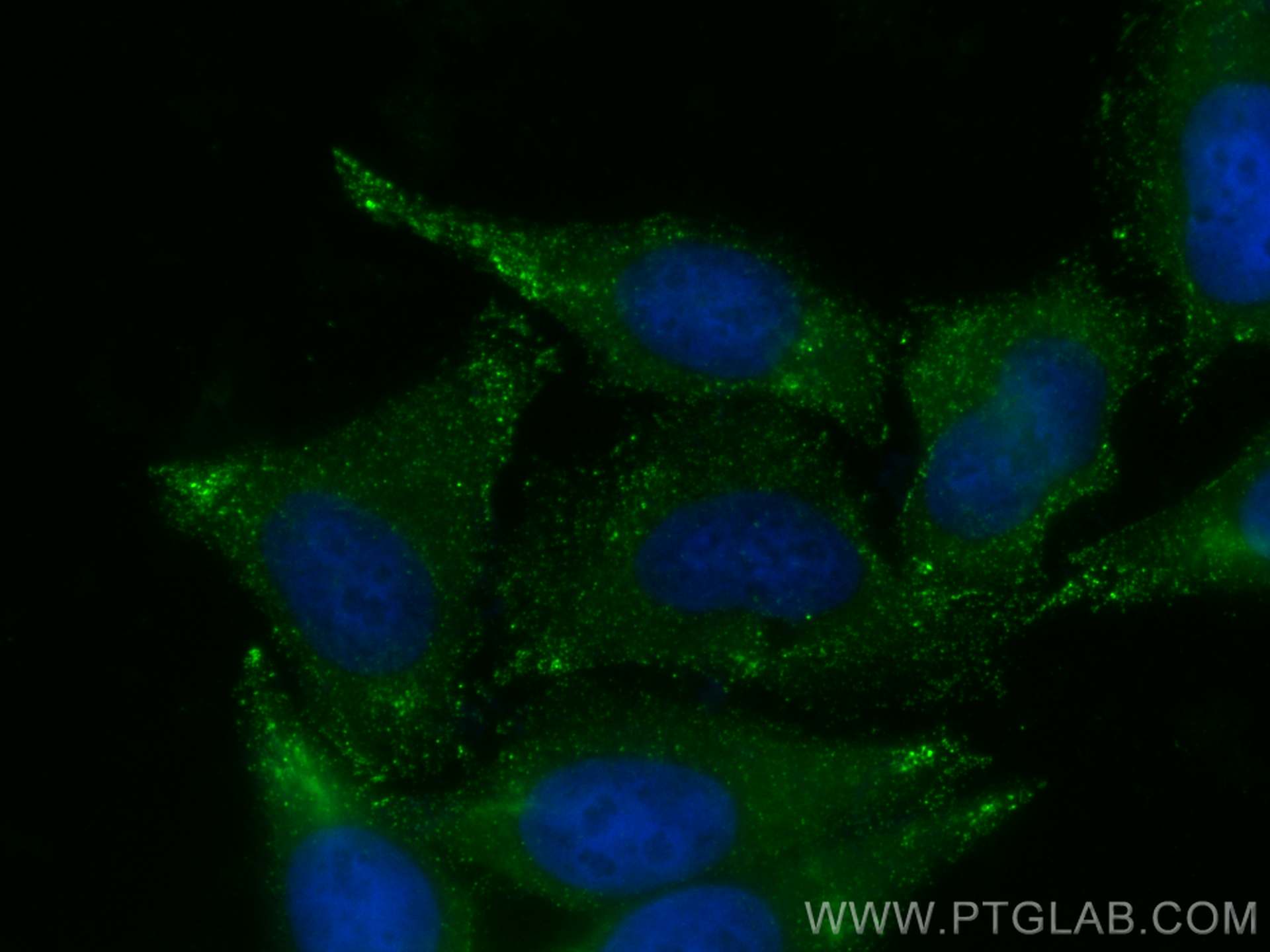- Featured Product
- KD/KO Validated
CoraLite® Plus 488-conjugated PTRF Polyclonal antibody
PTRF Polyclonal Antibody for IF
Host / Isotype
Rabbit / IgG
Reactivity
human, mouse, rat
Applications
IF
Conjugate
CoraLite® Plus 488 Fluorescent Dye
Cat no : CL488-18892
Synonyms
Validation Data Gallery
Tested Applications
| Positive IF detected in | HepG2 cells |
Recommended dilution
| Application | Dilution |
|---|---|
| Immunofluorescence (IF) | IF : 1:50-1:500 |
| It is recommended that this reagent should be titrated in each testing system to obtain optimal results. | |
| Sample-dependent, Check data in validation data gallery. | |
Product Information
CL488-18892 targets PTRF in IF applications and shows reactivity with human, mouse, rat samples.
| Tested Reactivity | human, mouse, rat |
| Host / Isotype | Rabbit / IgG |
| Class | Polyclonal |
| Type | Antibody |
| Immunogen | PTRF fusion protein Ag13486 |
| Full Name | polymerase I and transcript release factor |
| Calculated Molecular Weight | 43 kDa |
| GenBank Accession Number | BC008849 |
| Gene Symbol | PTRF |
| Gene ID (NCBI) | 284119 |
| Conjugate | CoraLite® Plus 488 Fluorescent Dye |
| Excitation/Emission Maxima Wavelengths | 493 nm / 522 nm |
| Form | Liquid |
| Purification Method | Antigen affinity purification |
| Storage Buffer | PBS with 50% Glycerol, 0.05% Proclin300, 0.5% BSA, pH 7.3. |
| Storage Conditions | Store at -20°C. Avoid exposure to light. Stable for one year after shipment. Aliquoting is unnecessary for -20oC storage. 20ul sizes contain 0.1% BSA. |
Background Information
Polymerase I and transcript release factor(PTRF) is an essential factor in the biogenesis of caveolae, which involve in numerous process, such as signal transduction and membrane and lipid trafficking. PTRF can terminate transciption of RNA Pol I, which involves pausing of transcription by TTF1, and dissocaition of the transcription complex, release the complex from the template. The calculated molecular weight of PTRF is 43 kDa, but modified PTRF is about 50-55kDa. (PMID: 11139612 )
Protocols
| Product Specific Protocols | |
|---|---|
| IF protocol for CL Plus 488 PTRF antibody CL488-18892 | Download protocol |
| Standard Protocols | |
|---|---|
| Click here to view our Standard Protocols |


